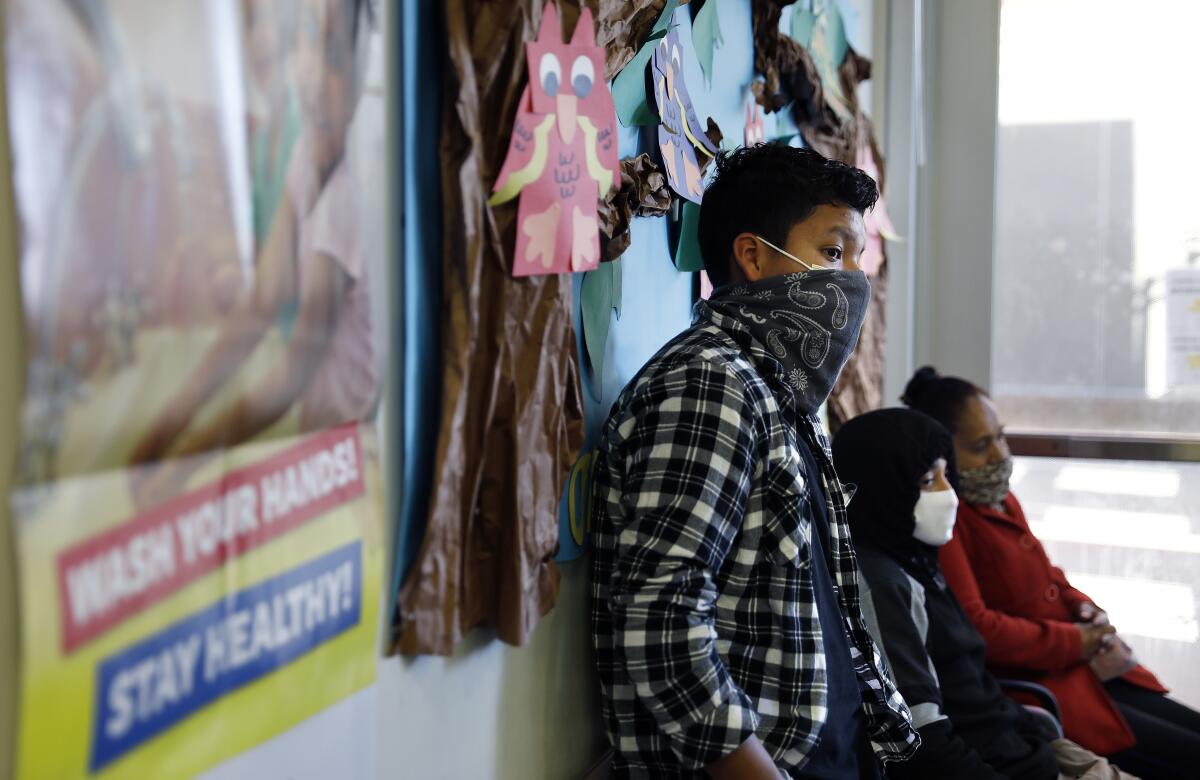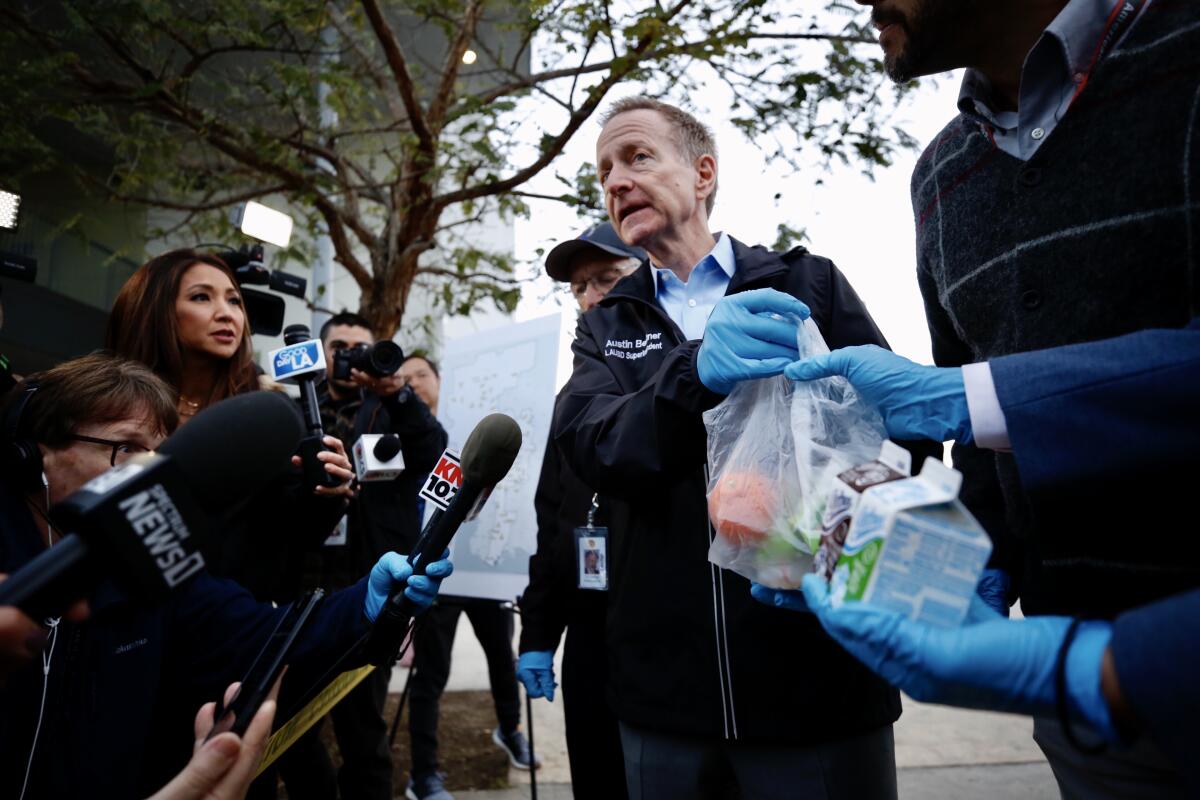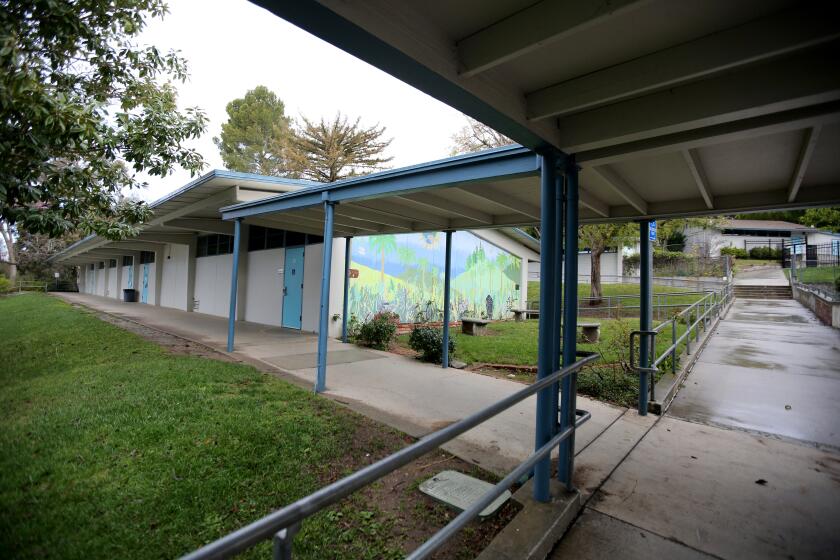Coronavirus-caused LAUSD school shutdown worsens inequities as many students go AWOL

- Share via
New data showing large numbers of Los Angeles Unified School District students failing to keep up with at-home work amid the coronavirus shutdown underscore how the crisis could be worsening already deep inequities, experts said.
When school shut down last month, the district began distributing computers and arranged for free internet access — moves that have helped many. But the swift transition to online learning has presented massive challenges in the nation’s second largest school district, which serves mainly students from low-income families.
Missed schoolwork
About 15,000 Los Angeles high school students are absent online and have failed to do any schoolwork while more than 40,000 have not been in daily contact with their teachers since March 16, when the coronavirus forced campus shutdowns, district officials disclosed Monday.
Those figures, the first official data on student online participation, illustrate the massive challenge confronting the nation’s second-largest school district, which is attempting an overnight transition to “distance learning” for half a million students.
The 15,000 unaccounted-for students are an especially serious source of concern, said Supt. Austin Beutner, who released the figures Monday.
The 40,000 who are not in daily contact with their teachers represents about a third of all Los Angeles high school students. However, some of them may be doing assigned work that does not require a daily check-in.
Falling further behind?
“Some kids will figure it was a time off, other kids don’t have the infrastructure, other kids are watching younger siblings, other kids are trying to find a job to help their family out,” said UCLA education professor Tyrone Howard.
“We have long lamented chronic absenteeism as one of the big contributors to these ... achievement gaps,” Howard said.
During regular school days, students who are at a higher risk for chronic absenteeism may be low-income, disabled, language learners or homeless.
“If we had 12.5% of kids who just were not showing up at school that’d be a major issue” on a regular campus, he said. But more data are needed to understand which students are not showing up to virtual school and target outreach to those students, he said. “There’s got to be some ways to ... drill down on the data that we can have real customized types of responses,” Howard said.
Teachers’ relationships before the closures could also affect whether kids are showing up, Howard said. In talking to his former students who now teach in L.A., the ones who have been able to get kids online already have strong relationships with them and their parents, know who their friends are and how to get in touch, he said.
“Teachers who are able to stay connected with students probably do a much better job of staying connected to them during times of crisis,” Howard said.
And in the meanwhile, Howard fears that students who are missing school will fall more behind than their potentially better-resourced peers.
While he gives L.A. Unified credit for trying to reach families quickly, “To try to go completely online... that’s a hard thing to do without some really careful, thoughtful planning,” he said.
Let’s stop pretending that the kids stuck at home during the shutdown are getting ‘home-schooled.’ They’re not. California needs a plan.
Schools and support
It would be unfair to characterize students who have not yet connected to virtual school as ditching or blowing off class, said UC Berkeley education and African American studies professor Janelle Scott.
“I think you ... can make some sort of logical assumptions that there would be a relationship between kids who are chronically absent under non-pandemic times and current times,” Scott said. “Certainly there are kids that are just disengaged from school... but a lot of it has to do with hunger, and housing insecurity,” as well as potentially a lack of adult connection or health issues, among a myriad of other possible distractions.
“This crisis has laid bare what we always knew — how equitable opportunities are so dependent on parental background and wealth and access to resources,” she said, and that kids without those resources tend to be concentrated in the schools with the least ability to meet their needs.
Even before the coronavirus, there were inequities between schools and students in terms of resources and achievement. Still, even in the more under-resourced campuses, families rely on schools for support, including meals and mental health, she said.

“These inequities do become deeper and broader during this time… having a physical school does really matter and having caring adults around who can support children and family is vital,” Scott said. “Just trying to figure out who these 15,000 kids are... is really important.”
It’s also too early to know how educational outcomes will be affected, she said.
“I think it’s possible that things could change. It’s not like we went to virtual schooling because we thought virtual schooling was better,” she said. “We went to virtual schooling because it was a crisis.”
A student’s view
Melissa Ponce, 16, agreed that lessons at the Maywood Center for Enriched Studies are inconsistent, depending on the teacher. And sometimes because of online training sessions that teachers must take, classes can’t be offered on the same school-day schedule, which could be affecting attendance.
How does the coronavirus spread? Should you wear a mask? What are the symptoms of COVID-19? How can you treat it? In this special edition of Coronavirus Today, we bring you comprehensive answers to some of your most pressing questions.
But the school did a good job preparing students for distance learning by providing Chromebooks and WiFi hotspots, she said. And teachers use multiple apps to try to keep students on track.
“I’m pretty sure there are students that just don’t want to log in ... some students don’t want to be in school when we’re like, in school, so now that we’re online they don’t have the teachers right there to tell them, ‘Oh, do your work,’” Melissa said.“I think the school has done a good job of making sure we have the resources,” she said.
More to Read
Sign up for Essential California
The most important California stories and recommendations in your inbox every morning.
You may occasionally receive promotional content from the Los Angeles Times.













